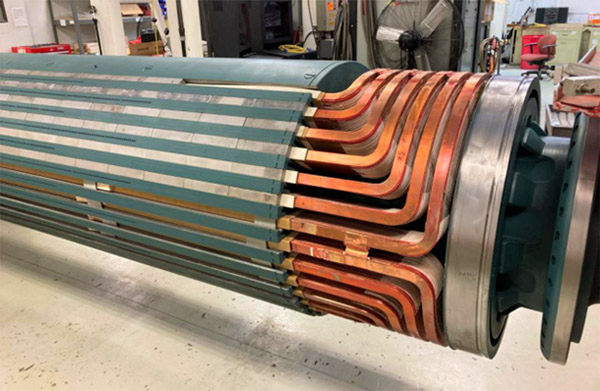Overview
With the energy transition comes new opportunities like this to quickly repurpose retiring assets for others still in operation that critically need them.

The challenge
Steam plants can experience a forced outage for numerous reasons, some more serious than others. When it occurs due to a 16-inch crack on a generator rotor field, the consequences can be severe.
Such was the situation with a western U.S. steam plant operator that delivers baseload power to its community of about one million people. The 600MW site called on GE Vernova’s Steam Power team to identify an alternative solution to having a new forging or generator rotor manufactured when one of its units tripped offline unexpectedly.
Producing a new forging or rotor would both have resulted in extended downtime, and significant capital investment. The plant plays a major role in stabilizing the community’s grid, which is also fed by several renewable sources including wind and solar power.
The solution
While a spare generator rotor compatible with a specific unit can be difficult to come by, Steam Power tapped into its installed base network to search for a match. In a matter of several weeks, the service team identified and negotiated the purchase of a field that came available from a recently-retired U.S. steam site. This process involved performing a full engineering study to validate both mechanical and electrical compatibility. Through a machining process, the rotor was modified, rewound, then shipped to the plant for installation in less than half the cycle time it would have taken to repair the rotor forging crack.
Outcomes
Reduced downtime and costs

Being able to repurpose an existing rotor field in good condition from a retired steam plant saved the operator significant downtime had a new forging or field been needed. Repairing a crack of the size found would have required extensive welding and testing, or manufacturing of a major forging, the size of which typically takes more than a year to produce. And, had the plant’s team determined that ordering a new rotor field would have been the right option for its operating strategy, producing one could have taken up to two years.
Side-stepping the need to order a new field also reduced the project cost by well over $1 million, which in combination with the many months of additional downtime could have totaled a multi-million-dollar impact to the site’s profitability. With the energy transition comes new opportunities like this to quickly repurpose retiring assets for others still in operation that critically need them.
Case Studies
See more outcomes
Contact us

